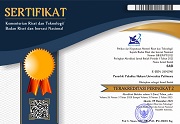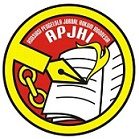MEMAHAMI THIRD WORLD APPROACHES TO INTERNATIONAL LAW ( TWAIL )
 )
)
(1) Fakultas Hukum Universitas Pattimura, Indonesia
 Corresponding Author
Corresponding Author
Abstract
The development of international law can not be separated from the history of the world, but
the development can not be separated also from the dark width with the outbreak of World
War I and World War II. After the end of World War II, the beginning of a period of
brightness which is a new stage for the development of society and international law. There
are some new changes and developments but the situation does not reflect the world as a
whole because of the polarization of the world or the international community at that time
was divided into two. The second group, which is the former colony of the former, considers
that international law is heavily dominated by European and American values, and in no way
accommodates the values of local wisdom from the former colonies. Along with the
development of contemporary international law, the "lawsuit" of former colonies that are
usually also referred to as third world countries against the domination of European and
American countries in international law is the reason for the birth of Third World Approaches
to International Law. TWAIL exists to solve, appearing to show the material and ethical
issues and difficulties facing the Third World.
Keywords
DOI
10.47268/sasi.v23i1.154
Published
2017-06-30
How To Cite
@article{SASI154,
author = {Dyah Daties},
title = {MEMAHAMI THIRD WORLD APPROACHES TO INTERNATIONAL LAW ( TWAIL )},
journal = {SASI},
volume = {23},
number = {1},
year = {2017},
keywords = {TWAIL; Third World},
abstract = {The development of international law can not be separated from the history of the world, butthe development can not be separated also from the dark width with the outbreak of WorldWar I and World War II. After the end of World War II, the beginning of a period ofbrightness which is a new stage for the development of society and international law. Thereare some new changes and developments but the situation does not reflect the world as awhole because of the polarization of the world or the international community at that timewas divided into two. The second group, which is the former colony of the former, considersthat international law is heavily dominated by European and American values, and in no wayaccommodates the values of local wisdom from the former colonies. Along with thedevelopment of contemporary international law, the "lawsuit" of former colonies that areusually also referred to as third world countries against the domination of European andAmerican countries in international law is the reason for the birth of Third World Approachesto International Law. TWAIL exists to solve, appearing to show the material and ethicalissues and difficulties facing the Third World.},
issn = {2614-2961}, pages = {13--18} doi = {10.47268/sasi.v23i1.154},
url = {https://fhukum.unpatti.ac.id/jurnal/sasi/article/view/154}
}
Melda Kamil Ariadno, 2007, Hukum Internasional Hukum Yang Hidup, Diadit Media, Jakarta.
J.G. Starke, 2014, Pengantar Hukum Internasional, Sinar Grafika, Jakarta.
Dyah R.A. Daties, Sejarah Perkembangan Hukum Laut, Materi Kuliah Hukum Laut.
S.M. Noor., 2012, Sejarah Hukum Internasional, http://www.negarahukum.com/hukum/sejarah-hukum-internasional.html.
Damos Dumoli Agusman, 2014, Indonesia dan Hukum Internasional : Dinamika Posisi Indonesia Terhadap Hukum Internasional, Jurnal Opinio Juris Vol. 15 Januari – April 2014
| Dublin Core | PKP Metadata Items | Metadata for this Document | |
| 1. | Title | Title of document | MEMAHAMI THIRD WORLD APPROACHES TO INTERNATIONAL LAW ( TWAIL ) |
| 2. | Creator | Author's name, affiliation, country | Dyah R. A. Daties; Fakultas Hukum Universitas Pattimura; Indonesia |
| 3. | Subject | Discipline(s) | |
| 3. | Subject | Keyword(s) | TWAIL; Third World |
| 4. | Description | Abstract | The development of international law can not be separated from the history of the world, butthe development can not be separated also from the dark width with the outbreak of WorldWar I and World War II. After the end of World War II, the beginning of a period ofbrightness which is a new stage for the development of society and international law. Thereare some new changes and developments but the situation does not reflect the world as awhole because of the polarization of the world or the international community at that timewas divided into two. The second group, which is the former colony of the former, considersthat international law is heavily dominated by European and American values, and in no wayaccommodates the values of local wisdom from the former colonies. Along with thedevelopment of contemporary international law, the "lawsuit" of former colonies that areusually also referred to as third world countries against the domination of European andAmerican countries in international law is the reason for the birth of Third World Approachesto International Law. TWAIL exists to solve, appearing to show the material and ethicalissues and difficulties facing the Third World. |
| 5. | Publisher | Organizing agency, location | Faculty of Law, Universitas Pattimura |
| 6. | Contributor | Sponsor(s) | |
| 7. | Date | (YYYY-MM-DD) | 2017-06-30 |
| 8. | Type | Status & genre | Peer-reviewed Article |
| 8. | Type | Type | |
| 9. | Format | File format | PDF (Bahasa Indonesia) |
| 10. | Identifier | Uniform Resource Identifier | https://fhukum.unpatti.ac.id/jurnal/sasi/article/view/154 |
| 10. | Identifier | Digital Object Identifier | 10.47268/sasi.v23i1.154 |
| 11. | Source | Title; vol., no. (year) | SASI; Vol 23, No 1 (2017): Volume 23 Nomor 1, Januari - Juni 2017 |
| 12. | Language | English=en | id |
| 13. | Relation | Supp. Files | |
| 14. | Coverage | Geo-spatial location, chronological period, research sample (gender, age, etc.) | |
| 15. | Rights | Copyright and permissions | Copyright: Authors who publish their manuscripts in this Journal agree to the following conditions: 1. The copyright in each article belongs to the author, as well as the right to patent. 2. Authors can enter into separate, additional contractual arrangements for the non-exclusive distribution of the journal's published version of the work (e.g., post it to an institutional repository or publish it in a book), with an acknowledgment of its initial publication in this journal. 3. Authors are permitted and encouraged to post their work online (e.g., in institutional repositories or on their website) before and during the submission process, as it can lead to productive exchanges, as well as earlier and greater citation of published work. 4. Authors have the right to self-archiving of the article (Author Self-Archiving Policy)
License: The SASI Journal is disseminated based on the Creative Commons Attribution-NonCommercial 4.0 International license terms. This license allows anyone to copy and redistribute this material in any form or format, compose, modify, and make derivatives of this material for any purpose. You cannot use this material for commercial purposes. You must specify an appropriate name, include a link to the license, and certify that any changes have been made. You can do this in a way that is appropriate but does not imply that the licensor supports you or your use.
|
Copyright (c) 2019 Dyah R. A. Daties

This work is licensed under a Creative Commons Attribution-NonCommercial 4.0 International License.

 : 4963 times
: 4963 times Download : 6225 times
Download : 6225 times
















